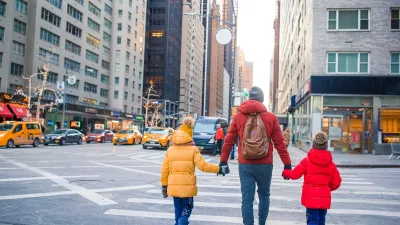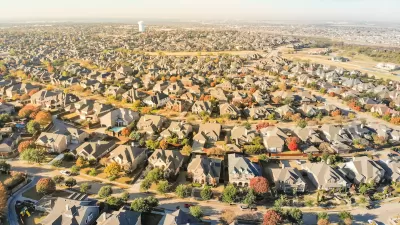The growth of urban Jewish populations is more evidence that educated Americans are less hostile to city life today than they were in the late 20th century.

In the past, I have written about the suburbanization of the American Jewish population: a topic of much personal interest to me, but perhaps of less interest to non-Jewish readers. Even so, Jewish life is a canary in a coal mine: because Jews tend to be disproportionately well-educated and affluent, a city with a significant Jewish population is likely to be a revitalizing city, while cities where nearly all Jews live in suburbia tend to be rapidly declining cities (such as St. Louis and Cleveland).
One question I've been interested in recently: Has there been a "back to the city" movement among American Jews? To analyze this question, I looked at the Jewish Data Bank website, which contains population surveys from all over the nation. Because most communities conduct population studies every decade or two, I only have recent data for a few regions. Even so I found a small pattern of urban growth. To name some examples:
In Boston, there has been significant reurbanization. Thirty-three percent of regional Jews now live in the city of Boston or its two most city-like inner suburbs (Cambridge and Somerville), up from 22 percent in 2005. Much of this growth is concentrated among younger people: 50 percent of Jews under 34 live in these areas.
In Miami's urban South Beach, the Jewish population increased by 20 percent between 2004 and 2014, after nosediving for years. In Central Miami (that is, the eastern half of the city of Miami) the number of households tripled between 2004 and 2014. Similarly, the number of Jews in Northeast South Dade (mostly the western half of Miami, plus some inner ring suburbs) increased by about 30 percent. On the other hand, outer suburbs have been gaining as well: the Jewish population in Palm Beach County, the northern edge of South Florida, has increased significantly. Population-losing Jewish communities are in in-between suburbs like East Kendall and Broward County: very suburban but not quite as new or as far out as Palm Beach.
In Chicago, the city's Jewish population increased between 2000 and 2010, by 7 percent in the North side and 4 percent in the South Side.
A Baltimore-area survey measured both households and persons, yielding somewhat ambiguous results. The number of Jewish households in Central Baltimore (which includes the parts of Baltimore closest to downtown) increased by 46 percent between 1999 and 2010. On the other hand, the number of Jewish persons increased by only 2 percent. What's going on? Declining household sizes may mean that older families are being replaced by young singles and couples. In Park Heights (which is just barely within the city limits) the Jewish population increased by 25 percent. Jewish population decreased in older suburbs such as Randallstown and Owings Mills.
In 1995, about 2,600 Jews lived in the city of St. Louis; by 2014 the number doubled to a still-puny 5,000 (about 6 percent of the region's Jewish population).
Philadelphia is an outlier; the city's Jewish population actually declined over the past decade. However, Philadelphia's population study did not discuss trends by neighborhood, so I don't know whether the declines were in the urban core or in Northeast Philadelphia, which is essentially suburban.
Even so, the pattern seems clear: Jews are repopulating close-in neighborhoods in more regions than not.

Alabama: Trump Terminates Settlements for Black Communities Harmed By Raw Sewage
Trump deemed the landmark civil rights agreement “illegal DEI and environmental justice policy.”

Planetizen Federal Action Tracker
A weekly monitor of how Trump’s orders and actions are impacting planners and planning in America.

The 120 Year Old Tiny Home Villages That Sheltered San Francisco’s Earthquake Refugees
More than a century ago, San Francisco mobilized to house thousands of residents displaced by the 1906 earthquake. Could their strategy offer a model for the present?

Ken Jennings Launches Transit Web Series
The Jeopardy champ wants you to ride public transit.

BLM To Rescind Public Lands Rule
The change will downgrade conservation, once again putting federal land at risk for mining and other extractive uses.

Indy Neighborhood Group Builds Temporary Multi-Use Path
Community members, aided in part by funding from the city, repurposed a vehicle lane to create a protected bike and pedestrian path for the summer season.
Urban Design for Planners 1: Software Tools
This six-course series explores essential urban design concepts using open source software and equips planners with the tools they need to participate fully in the urban design process.
Planning for Universal Design
Learn the tools for implementing Universal Design in planning regulations.
Clanton & Associates, Inc.
Jessamine County Fiscal Court
Institute for Housing and Urban Development Studies (IHS)
City of Grandview
Harvard GSD Executive Education
Toledo-Lucas County Plan Commissions
Salt Lake City
NYU Wagner Graduate School of Public Service






























